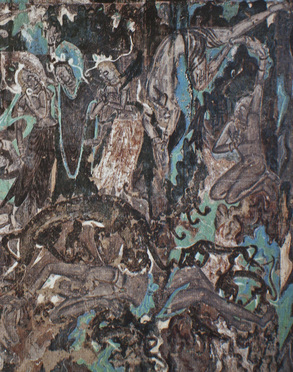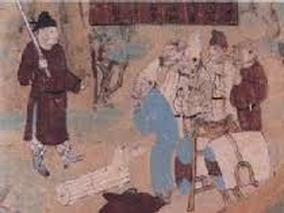Banner Image: A mural depicting the meeting of two prominent Buddhist figures, from the Mogao caves.
Social Diffusion
"According to the Hsi-yu-t'u-chi and the historical records of the Han and Wei dynasties, the country of Ta-ts'in [Roman Syria] begins in the south at the Coral Sea, and extends in the north to the Chung-pau-shan [hills of precious stones]...robberies are unknown there, and the people enjoy peace and happiness. Only the luminous [i.e., Christian] religion is practised; only virtuous rulers occupy the throne. This country is vast in extent; its literature is flourishing."
-From the Nestorian Stone Inscription, cols. 12-13 (written 781 C.E.)

